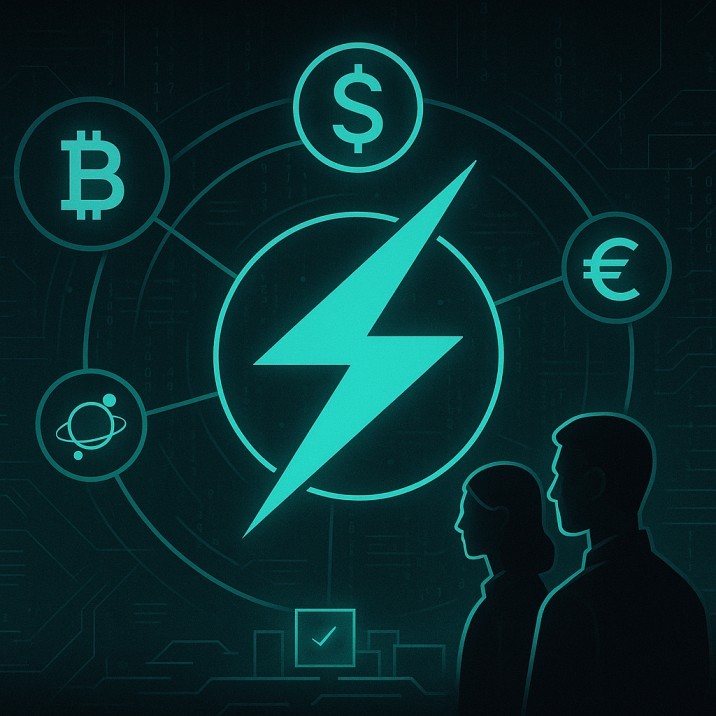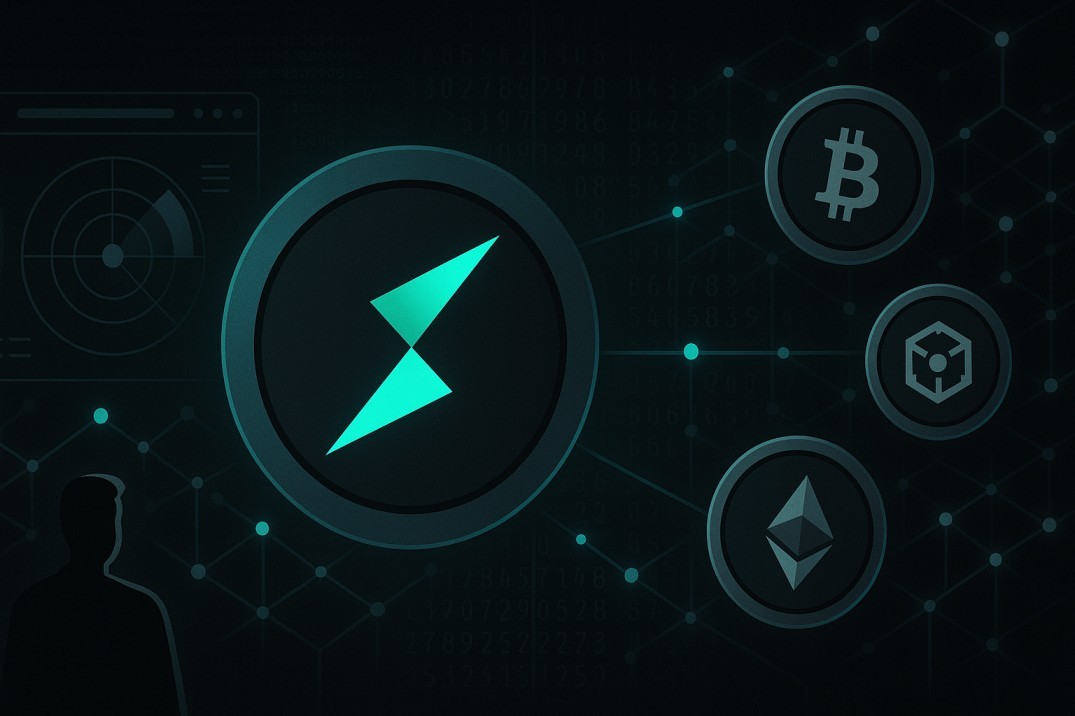TLDR: THORChain (RUNE) in a Nutshell
- What it is: A decentralized cross-chain liquidity protocol enabling swaps of native assets like BTC, ETH, and stablecoins.
- Powered by: RUNE, the utility, governance, and security token.
- Unique features: Native asset settlement, slip-based fees, deterministic ordering, and streaming swaps.
- Security: Cosmos SDK, Tendermint consensus, threshold signatures, and economic incentives via bonded RUNE.
- Use cases: Powering cross-chain swaps in wallets, exchanges, and aggregators like Trust Wallet and Ledger Live.
- Challenges: Security vulnerabilities, competition, and liquidity growth.
- Why it matters: A foundational piece of DeFi infrastructure solving fragmented liquidity across blockchains.
Decentralized finance (DeFi) is often hailed as the future of financial systems, but one of its biggest challenges remains cross-chain interoperability-the ability to move assets freely between different blockchains. Bitcoin lives on its own chain, Ethereum operates separately, and other ecosystems like Binance Smart Chain, Avalanche, and Cosmos all function in silos. For years, this fragmentation limited liquidity, forced users into centralized exchanges, or required wrapping assets into synthetic tokens.
THORChain (RUNE) steps into this problem with a bold solution: a decentralized, permissionless liquidity protocol that enables native asset swaps across multiple blockchains-without custodians, wrapped tokens, or order books. It is a true cross-chain automated market maker (AMM), powered by innovative cryptography, liquidity incentives, and its native token, RUNE.
In this article, we'll dive deep into what THORChain is, how it works, the role of RUNE, its security mechanisms, unique features, challenges, and what the future holds for this pioneering cross-chain liquidity protocol.
The Origins of THORChain

THORChain first emerged in 2019 after raising funds through an Initial DEX Offering (IDO) on Binance DEX. The project quietly built its foundations over the following years, culminating in the launch of the single-chain chaosnet in April 2021. Shortly afterward, THORChain deployed its multi-chain chaosnet, expanding its cross-chain functionality. Finally, in June 2022, the project launched its long-awaited mainnet, marking a major milestone in decentralized cross-chain liquidity.
Interestingly, unlike most crypto projects, THORChain doesn't have a CEO or public founding team. Instead, it describes itself as a leaderless project where development is open-source and coordinated through GitLab. The protocol is effectively run by its node operators and community, while organizations like Nine Realms play a supporting role in managing the codebase and facilitating upgrades.
This decentralized governance structure is part of THORChain's ethos: avoiding central points of failure while enabling the protocol to evolve as a neutral cross-chain infrastructure layer.
What is THORChain?

At its core, THORChain is a decentralized liquidity protocol that enables users to swap assets across blockchains like Bitcoin, Ethereum, Binance Smart Chain, Cosmos, Litecoin, Dogecoin, Avalanche, and more-all in a permissionless, trustless manner. Unlike centralized exchanges (CEXs), where users deposit funds into custodial wallets, THORChain ensures users retain full custody of their assets throughout the process.
Unlike traditional DEXs, which are typically confined to a single blockchain (e.g., Uniswap on Ethereum), THORChain facilitates cross-chain liquidity through its novel infrastructure. Some examples of what THORChain enables:
- Swap BTC for ETH without wrapping tokens.
- Swap DOGE for USDT directly on-chain.
- Provide liquidity in native BTC to earn yield.
- Access cross-chain swaps from wallets like Trust Wallet, Ledger Live, or XDEFI.
In short, THORChain acts as the invisible cross-chain engine powering DeFi, quietly running in the background of wallets and apps.
How Does THORChain Work?

To understand how THORChain works, it helps to break it down into a few components:
-
Automated Market Maker (AMM) Pools
THORChain uses liquidity pools instead of order books. Each pool pairs RUNE with another asset (e.g., RUNE-ETH, RUNE-BTC). Prices are determined by the ratio of assets in the pool, similar to AMMs like Uniswap. This means every swap, regardless of the asset, goes through RUNE as the settlement asset. For example:
-
BTC → RUNE → ETH
This design makes RUNE the base liquidity asset and ensures deep liquidity across all pools.
-
RUNE as the Core of the Ecosystem
RUNE is essential to THORChain's design:
- Liquidity: Every pool uses RUNE as a pair, doubling capital efficiency.
- Security: Node operators must bond RUNE as collateral, which is slashed if they act maliciously.
- Governance: RUNE holders have influence over network upgrades and protocol changes.
- Incentives: Liquidity providers earn fees and rewards in RUNE.
The requirement that bonded RUNE > pooled RUNE ensures nodes have more at stake than the liquidity they secure, creating strong economic incentives to act honestly.
-
Bifröst Protocol & Threshold Signatures (TSS)
THORChain's magic lies in securely connecting different blockchains. This is achieved through:
- Bifröst Protocol: The bridge layer enabling communication between THORChain and external blockchains.
- Threshold Signature Scheme (TSS): Used to manage vaults that hold native assets (e.g., BTC, ETH). No single node controls funds; instead, signatures are distributed across validators.
This setup allows users to swap native assets instead of wrapped tokens or synthetic representations.
-
Streaming Swaps
Large trades are split into smaller "streaming" swaps over time. This prevents slippage, reduces fees, and minimizes the impact of large trades on liquidity pools.
Unique Features of THORChain
THORChain introducing several innovations that set it apart:
- Native Asset Settlement: Direct swaps of real BTC for real ETH-no wrapped tokens.
- Slip-Based Fees: Designed to reduce impermanent loss and incentivize balanced liquidity pools.
- Deterministic Swap Ordering: Prevents frontrunning, sandwich attacks, and MEV strategies.
- Rotating Validator Set: Validators are churned every few days, keeping the network decentralized and secure.
- Built on Cosmos SDK: Leveraging Tendermint's consensus for fast, secure cross-chain settlement.
THORChain Tokenomics: The Role of RUNE
RUNE is a multi-purpose token at the heart of the THORChain ecosystem. It plays four primary roles:
- Liquidity: All pools are RUNE-paired, ensuring seamless swaps between any two assets.
- Security: Validators bond RUNE as collateral, with the bond required to be 2x the pooled liquidity.
- Incentives: Rewards for validators and liquidity providers are paid in RUNE.
- Governance: Protocol changes and upgrades are influenced by RUNE stakeholders.
The hard cap of RUNE is 500 million tokens, with emissions designed to gradually taper off over time, incentivizing long-term sustainability.
Security of the THORChain Network
THORChain's security model is designed to prevent both external and internal threats:
- Consensus: Powered by Tendermint BFT Proof-of-Stake, ensuring fast finality and protection against double-spending.
- Vault Security: Managed through Threshold Signatures (TSS), making it impossible for a single validator to control funds.
- Validator Rotation: Every 3 days, validators are churned to refresh the active set, removing poorly performing nodes and minimizing collusion risks.
- Economic Security: Nodes must bond RUNE worth more than the assets in pools, ensuring misbehavior is more costly than honest participation.
Challenges and Risks
While THORChain is a pioneering protocol, it faces several risks:
Security Risks: Cross-chain systems are inherently complex and have been prime targets for exploits. In 2021, THORChain suffered several multi-million-dollar hacks but recovered through community coordination and treasury funds.
Liquidity Competition: Other cross-chain solutions like bridges, Cosmos IBC, and Polkadot parachains compete in this space.
Complexity for Users: While wallets abstract much of the complexity, educating users on THORChain's benefits remains key.
Market Dependence: Like all DeFi protocols, THORChain's success depends on sustained liquidity and user adoption.
Why THORChain Matters
THORChain represents a major step toward solving one of crypto's biggest bottlenecks: fragmented liquidity across isolated blockchains. By enabling seamless, permissionless swaps of native assets, it reduces reliance on centralized exchanges, custodians, and wrapped tokens.
In doing so, it strengthens the foundations of DeFi and makes the multi-chain future more accessible to everyday users. As the ecosystem expands, THORChain could serve as the universal cross-chain liquidity layer, quietly powering the next generation of financial applications.
Final Thoughts
THORChain is a foundational layer for cross-chain finance. With its innovative use of RUNE as the base asset, strong security incentives, and seamless integration with wallets and apps, it is well-positioned to remain a critical piece of DeFi infrastructure.
The road ahead is not without risks, especially around security and competition, but if THORChain continues to evolve and scale responsibly, it could cement itself as the go-to protocol for cross-chain liquidity in Web3.











